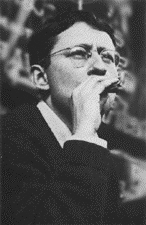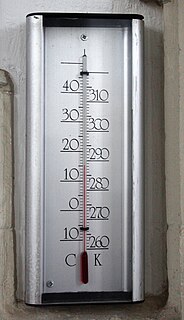
Naomi A. Klein is a Canadian author, social activist, and filmmaker known for her political analyses, support of ecofeminism, organized labour, left-wing politics and criticism of corporate globalization, fascism and capitalism. On a three-year appointment from September 2018, she is the Gloria Steinem Chair in Media, Culture, and Feminist Studies at Rutgers University.
The Situationist International (SI) was an international organization of social revolutionaries made up of avant-garde artists, intellectuals, and political theorists. It was prominent in Europe from its formation in 1957 to its dissolution in 1972. The intellectual foundations of the Situationist International were derived primarily from libertarian Marxism and the avant-garde art movements of the early 20th century, particularly Dada and Surrealism. Overall, situationist theory represented an attempt to synthesize this diverse field of theoretical disciplines into a modern and comprehensive critique of mid-20th century advanced capitalism.
Abstract expressionism is a post–World War II art movement in American painting, developed in New York City in the 1940s. It was the first specifically American movement to achieve international influence and put New York at the center of the Western art world, a role formerly filled by Paris. Although the term "abstract expressionism" was first applied to American art in 1946 by the art critic Robert Coates, it had been first used in Germany in 1919 in the magazine Der Sturm, regarding German Expressionism. In the United States, Alfred Barr was the first to use this term in 1929 in relation to works by Wassily Kandinsky.

Guy Louis Debord was a French Marxist theorist, philosopher, filmmaker, member of the Letterist International, founder of a Letterist faction, and founding member of the Situationist International. He was also briefly a member of Socialisme ou Barbarie.

Vorticism was a London-based modernist art movement formed in 1914 by the writer and artist Wyndham Lewis. The movement was partially inspired by Cubism and was introduced to the public by means of the publication of the Vorticist manifesto in Blast magazine. Familiar forms of representational art were rejected in favour of a geometric style that tended towards a hard-edged abstraction. Lewis proved unable to harness the talents of his disparate group of avant-garde artists; however, for a brief period Vorticism proved to be an exciting intervention and an artistic riposte to Marinetti’s Futurism and the post-impressionism of Roger Fry’s Omega Workshops.

COBRA was a European avant-garde movement active from 1948 to 1951. The name was coined in 1948 by Christian Dotremont from the initials of the members' home countries capital cities: Copenhagen (Co), Brussels (Br), Amsterdam (A).
An art movement is a tendency or style in art with a specific common philosophy or goal, followed by a group of artists during a specific period of time, or, at least, with the heyday of the movement defined within a number of years. Art movements were especially important in modern art, when each consecutive movement was considered as a new avant-garde movement.

Asger Oluf Jorn was a Danish painter, sculptor, ceramic artist, and author. He was a founding member of the avant-garde movement COBRA and the Situationist International. He was born in Vejrum, in the northwest corner of Jutland, Denmark, and baptized Asger Oluf Jørgensen.
Jørgen Nash was a Danish artist, writer and central proponent of Situationism.

Constant Anton Nieuwenhuys, better known as Constant, was a Dutch painter, sculptor, graphic artist, author and musician.
The Second Situationist International were a small group of situationists who broke away from the Situationist International (SI). Jørgen Nash identifies the first manifestation of the group as a leaflet signed by himself along with Jacqueline de Jong and Ansgar Elde, shortly after the group Seven Rebels was formed at Situationist Bauhau at Asger Jorn's farm Drakabygget in southern Sweden.

An art manifesto is a public declaration of the intentions, motives, or views of an artist or artistic movement. Manifestos are a standard feature of the various movements in the modernist avant-garde and are still written today. Art manifestos are sometimes in their rhetoric intended for shock value, to achieve a revolutionary effect. They often address wider issues, such as the political system. Typical themes are the need for revolution, freedom and the implied or overtly stated superiority of the writers over the status quo. The manifesto gives a means of expressing, publicising and recording ideas for the artist or art group—even if only one or two people write the words, it is mostly still attributed to the group name.

Lyrical abstraction is either of two related but distinct trends in Post-war Modernist painting:

Ilya Bolotowsky was a leading early 20th-century Russian-American painter in abstract styles in New York City. His work, a search for philosophical order through visual expression, embraced cubism and geometric abstraction and was influenced by Dutch painter Piet Mondrian.
McKenzie Wark is an Australian-born writer and scholar. Wark is known for her writings on media theory, critical theory, new media, and the Situationist International. Her best known works are A Hacker Manifesto and Gamer Theory. She is Professor of Media and Cultural Studies at The New School in New York City.
Concrete art was an art movement with a strong emphasis on geometrical abstraction. The term was first formulated by Theo van Doesburg and was then used by him in 1930 to define the difference between his vision of art and that of other abstract artists of the time. After his death in 1931, the term was further defined and popularized by Max Bill, who organized the first international exhibition in 1944 and went on to help promote the style in Latin America. The term was taken up widely after World War 2 and promoted through a number of international exhibitions and art movements.
The spectacle is a central notion in the Situationist theory, developed by Guy Debord in his 1967 book The Society of the Spectacle. In the general sense, the spectacle refers to "the autocratic reign of the market economy which had acceded to an irresponsible sovereignty, and the totality of new techniques of government which accompanied this reign." It also exists in its limited sense, where spectacle means the mass media, which are "its most glaring superficial manifestation." Debord said that the society of the spectacle came to existence in the late 1920s.
Jonathan Rodney Brockman is an American former professional basketball player who last played for MHP Riesen Ludwigsburg of the Basketball Bundesliga. He was the starting power forward and team captain for the University of Washington men's basketball team. He is the University of Washington's all-time leading rebounder and second-all-time leading scorer in University of Washington history. He grabbed the 1,000th rebound of his career on December 30, 2008 in a win over Morgan State, and became Washington's all-time leading rebounder on January 15, 2009 in a win over Oregon, breaking Doug Smart's school record of 1,051.

The kelvin is the base unit of temperature in the International System of Units (SI), having the unit symbol K. It is named after the Belfast-born Glasgow University engineer and physicist William Thomson, 1st Baron Kelvin (1824–1907).









